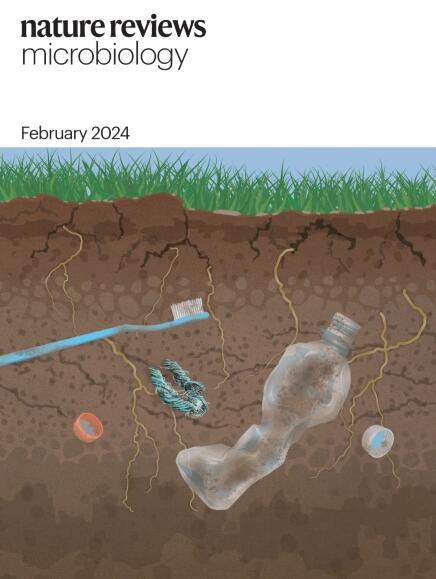早期地球环境与微生物生命的共同进化。
IF 69.2
1区 生物学
Q1 MICROBIOLOGY
引用次数: 0
摘要
有两种地球历史记录以可解释的保真度记录了生命的演化及其共同演化的生态系统:岩石中保存的地球生物学和地球化学痕迹以及基因组中记录的演化历史。最早的生命遗迹主要体现在特定微生物代谢的同位素指纹中,而化石和有机生物标志物在后来变得非常重要。分子生物学提供了可与生命进化的地质和地球化学记录相叠加的谱系。所有这些数据都在生物圈演化的框架内,而生物圈演化的主要特征是从缺氧世界过渡到富氧世界。在这篇综述中,我们将探讨地球上微生物生命的历史,以及它在多大程度上塑造了海洋、大陆和大气层化学特性的根本转变。我们研究了早期新陈代谢过程的多样性和演变、它们与生物地球化学循环的联系以及它们与早期生物圈含氧量的联系。我们将讨论新陈代谢的开始与随后的扩散之间的区别,以及它们在行星范围内塑造地表环境的能力。微生物生命的演变及其对生态的影响通过因果关系直接反映了地球的化学和物理演变。本文章由计算机程序翻译,如有差异,请以英文原文为准。


Co‐evolution of early Earth environments and microbial life
Two records of Earth history capture the evolution of life and its co-evolving ecosystems with interpretable fidelity: the geobiological and geochemical traces preserved in rocks and the evolutionary histories captured within genomes. The earliest vestiges of life are recognized mostly in isotopic fingerprints of specific microbial metabolisms, whereas fossils and organic biomarkers become important later. Molecular biology provides lineages that can be overlayed on geologic and geochemical records of evolving life. All these data lie within a framework of biospheric evolution that is primarily characterized by the transition from an oxygen-poor to an oxygen-rich world. In this Review, we explore the history of microbial life on Earth and the degree to which it shaped, and was shaped by, fundamental transitions in the chemical properties of the oceans, continents and atmosphere. We examine the diversity and evolution of early metabolic processes, their couplings with biogeochemical cycles and their links to the oxygenation of the early biosphere. We discuss the distinction between the beginnings of metabolisms and their subsequent proliferation and their capacity to shape surface environments on a planetary scale. The evolution of microbial life and its ecological impacts directly mirror the Earth’s chemical and physical evolution through cause-and-effect relationships. In this Review, Lyons, Tino and colleagues explore the evolution of microbial life on Earth and examine the diversity of early microbial metabolic pathways, their associations with biogeochemical cycles and how they shaped and responded to changing surface environments over billions of years.
求助全文
通过发布文献求助,成功后即可免费获取论文全文。
去求助
来源期刊

Nature Reviews Microbiology
生物-微生物学
CiteScore
74.00
自引率
0.50%
发文量
149
审稿时长
6-12 weeks
期刊介绍:
At Nature Reviews Microbiology, our goal is to become the leading source of reviews and commentaries for the scientific community we cater to. We are dedicated to publishing articles that are not only authoritative but also easily accessible, supplementing them with clear and concise figures, tables, and other visual aids. Our objective is to offer an unparalleled service to authors, referees, and readers, and we continuously strive to maximize the usefulness and impact of each article we publish. With a focus on Reviews, Perspectives, and Comments spanning the entire field of microbiology, our wide scope ensures that the work we feature reaches the widest possible audience.
 求助内容:
求助内容: 应助结果提醒方式:
应助结果提醒方式:


